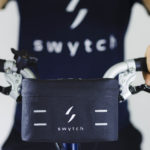Hi All,
I am new to the forum and the ebike world
I recently inherited a front hub bafang motor FM G31 D DC 250w and 36v batteries. Missing the controller and the bottom bracket torque sensor has a stripped cable. I 've digested all the info I could possibly find but as all newby I now have more questions and doubt. The ride ideally would be a city commuter with no need of hill climbing or speed but rather range and PAS only. On the back of the motor there is a sticker "20", is this the rated wheel size for the motor? If so , considering the commute use , would I be able to fit it to let's say a 26 inch? As for the controller I understand that the KT is very versatile is there a specific model I should look for for PAS only. Thank you in advance for any help you can share
I am new to the forum and the ebike world
I recently inherited a front hub bafang motor FM G31 D DC 250w and 36v batteries. Missing the controller and the bottom bracket torque sensor has a stripped cable. I 've digested all the info I could possibly find but as all newby I now have more questions and doubt. The ride ideally would be a city commuter with no need of hill climbing or speed but rather range and PAS only. On the back of the motor there is a sticker "20", is this the rated wheel size for the motor? If so , considering the commute use , would I be able to fit it to let's say a 26 inch? As for the controller I understand that the KT is very versatile is there a specific model I should look for for PAS only. Thank you in advance for any help you can share




